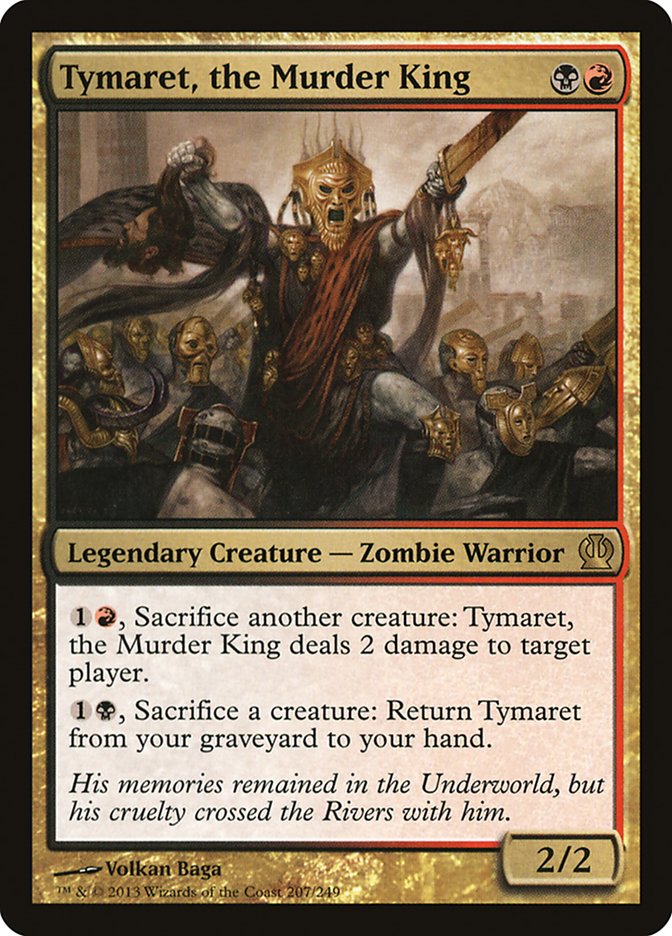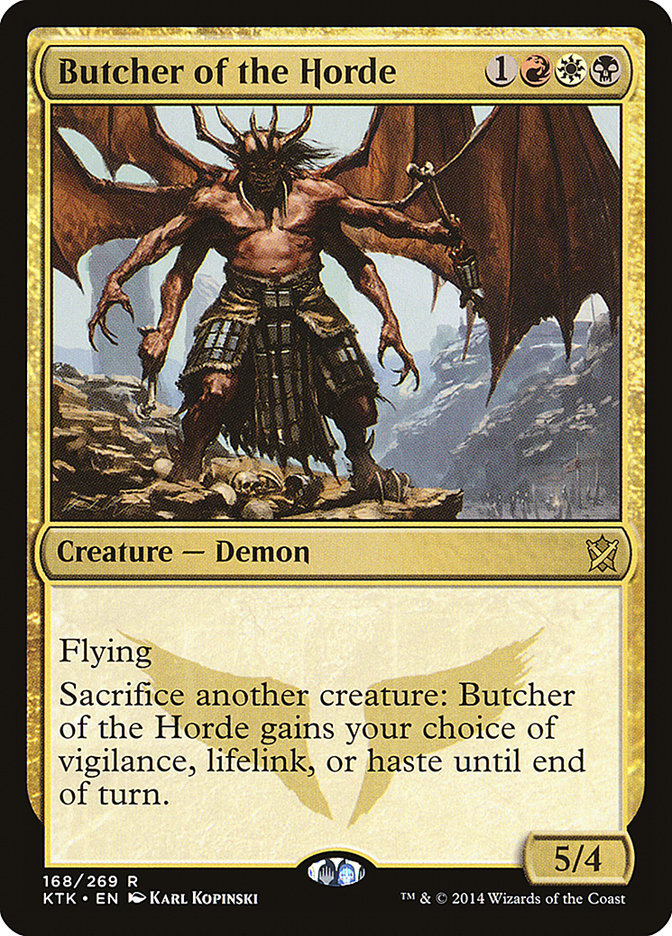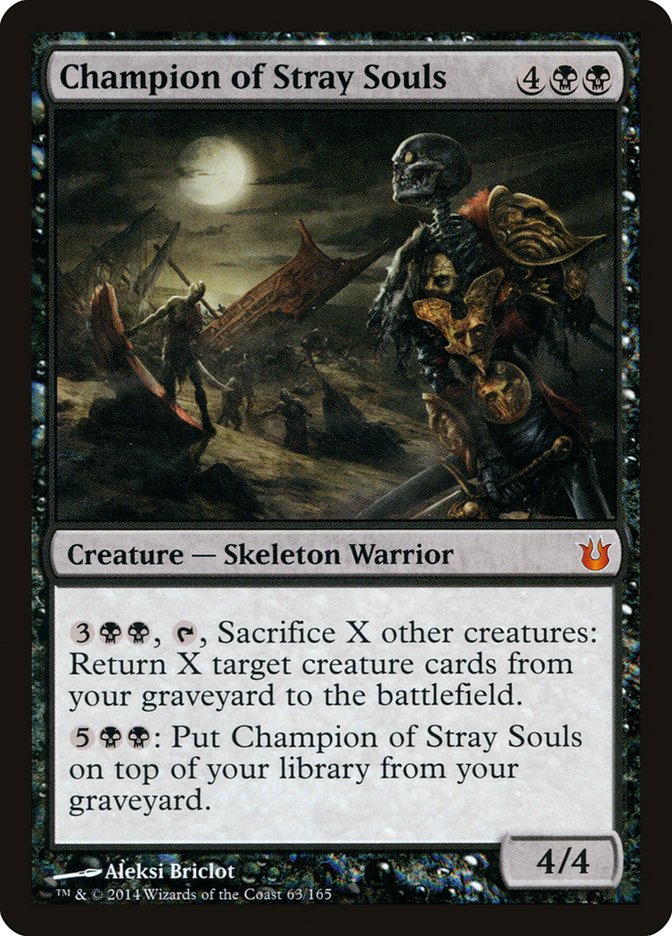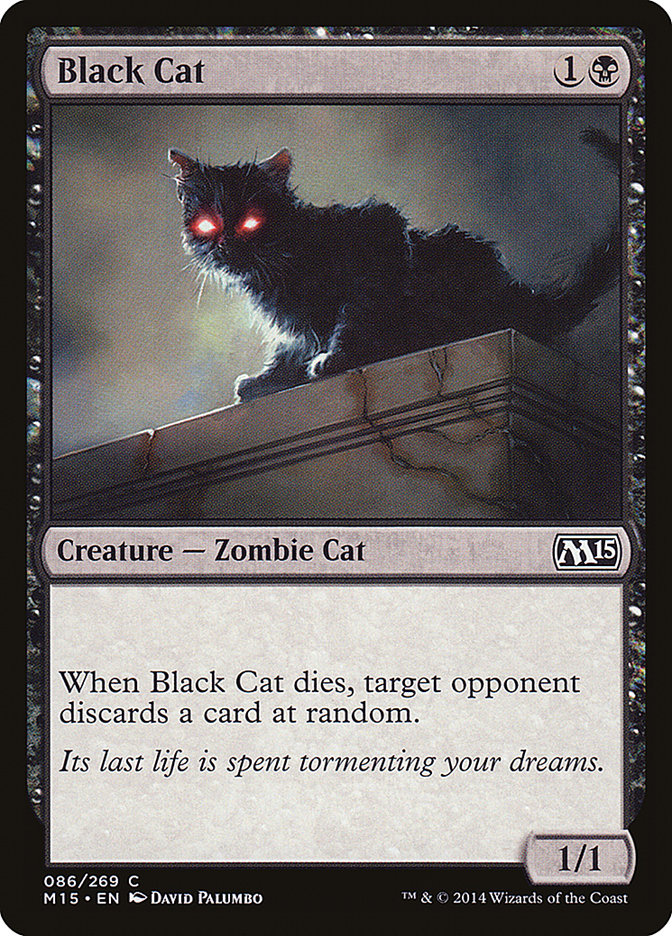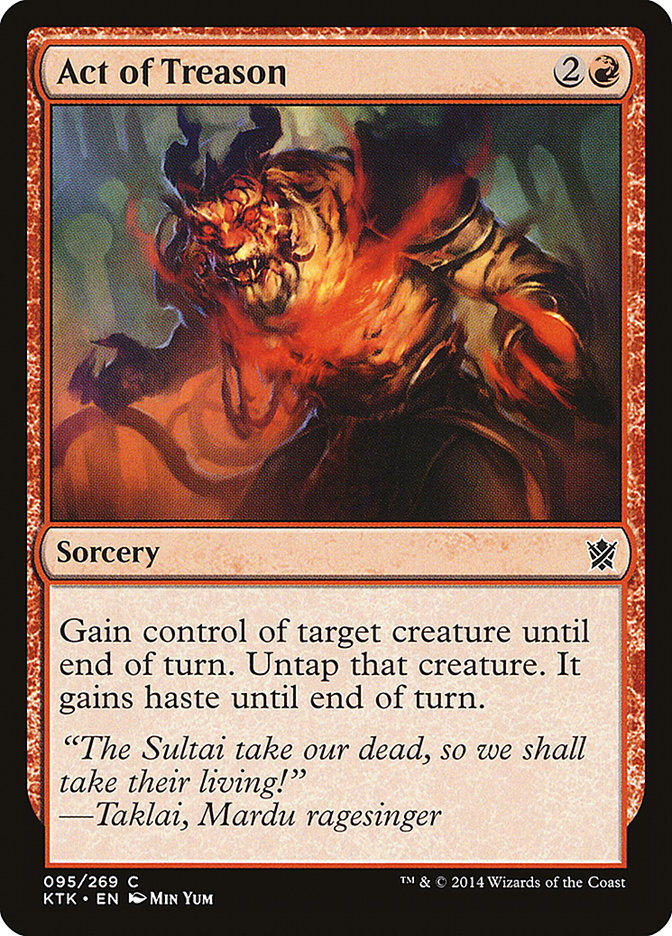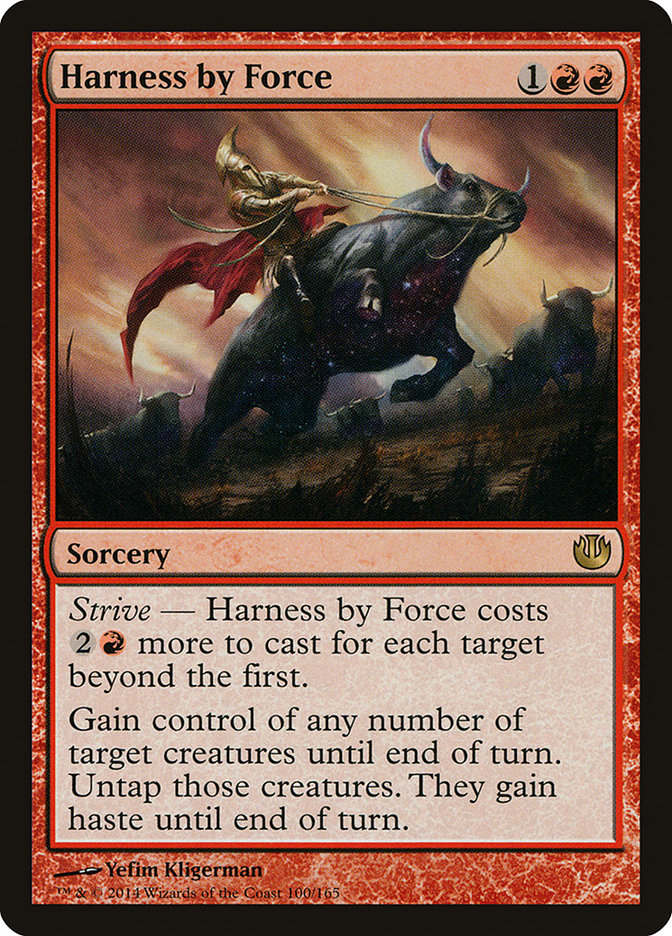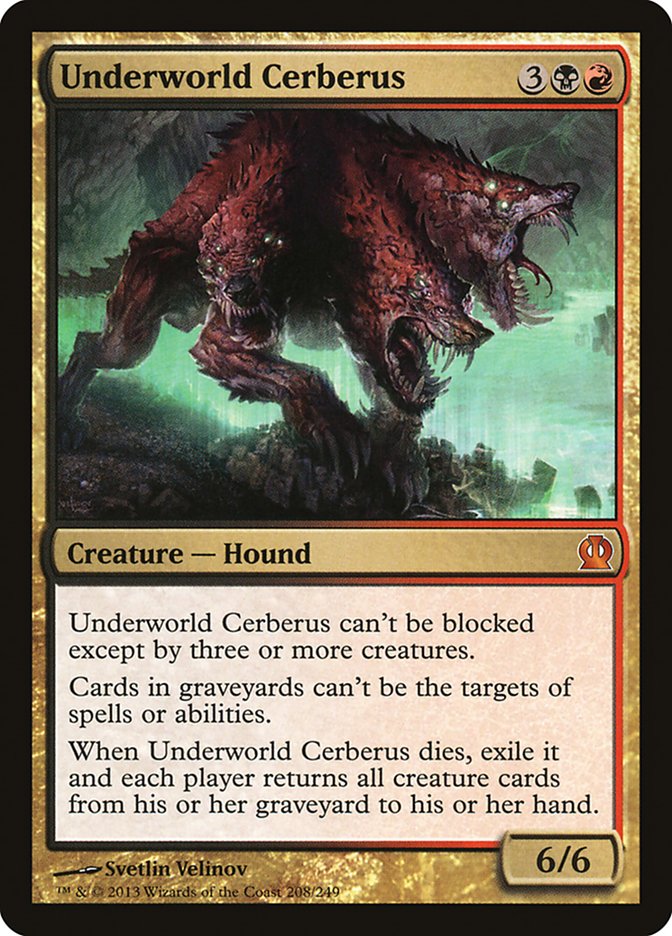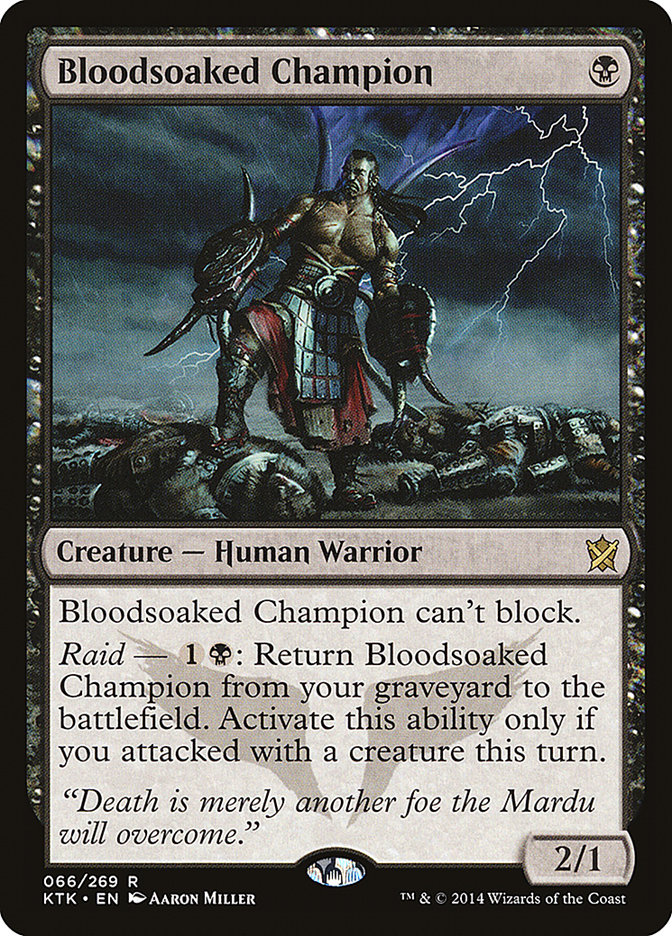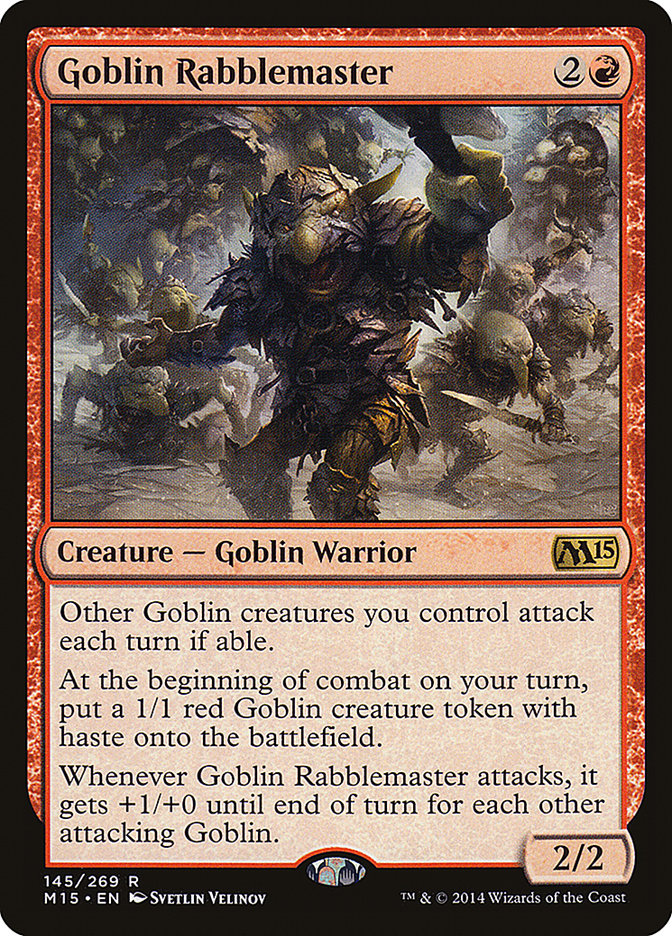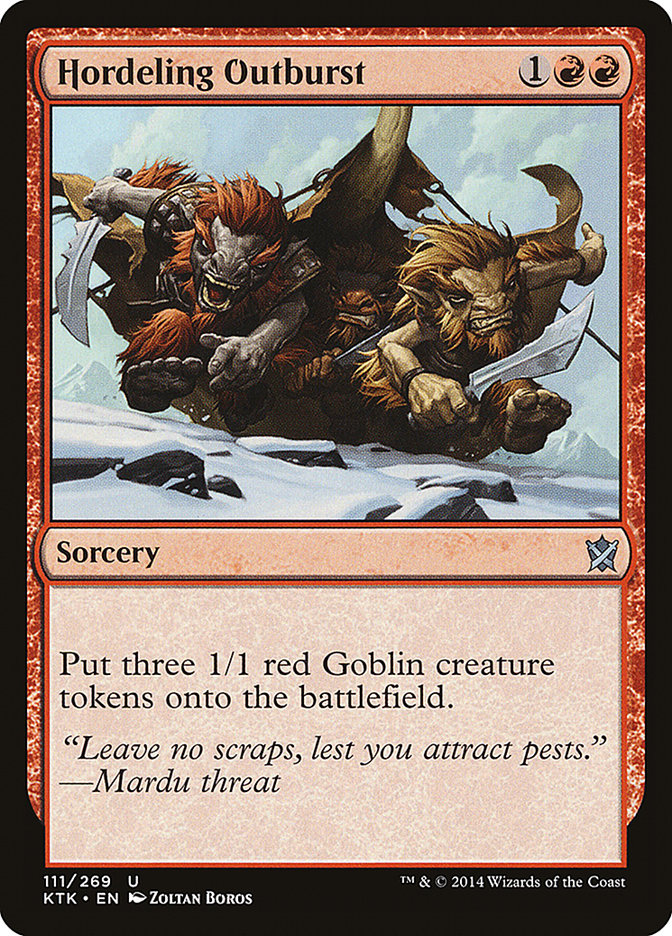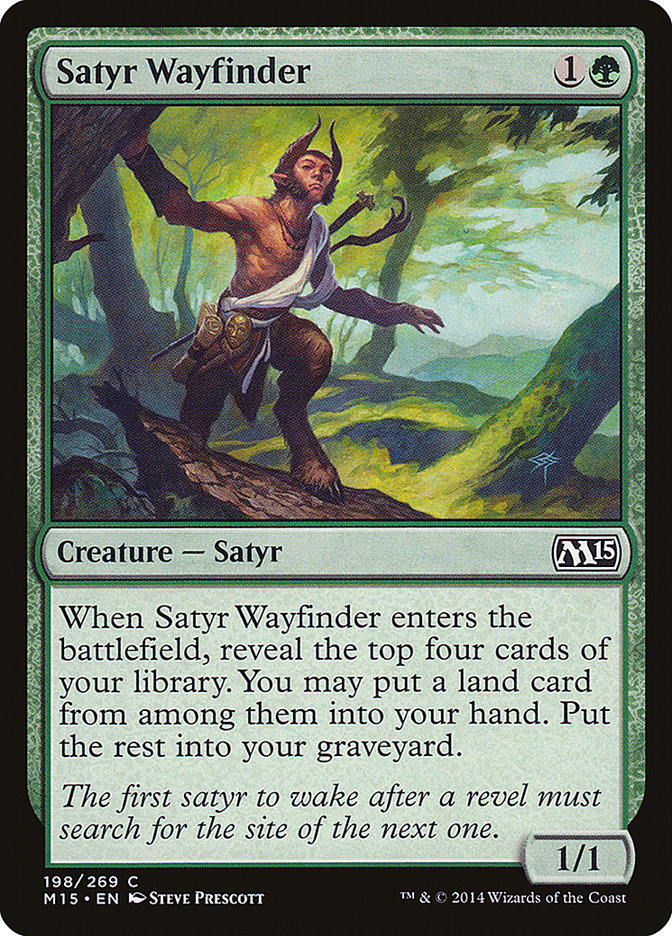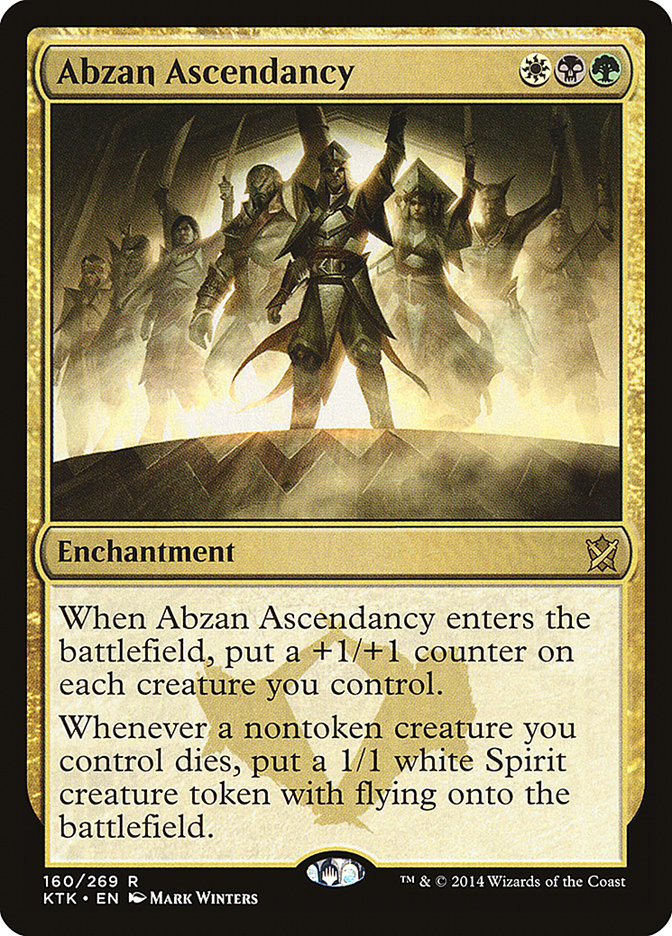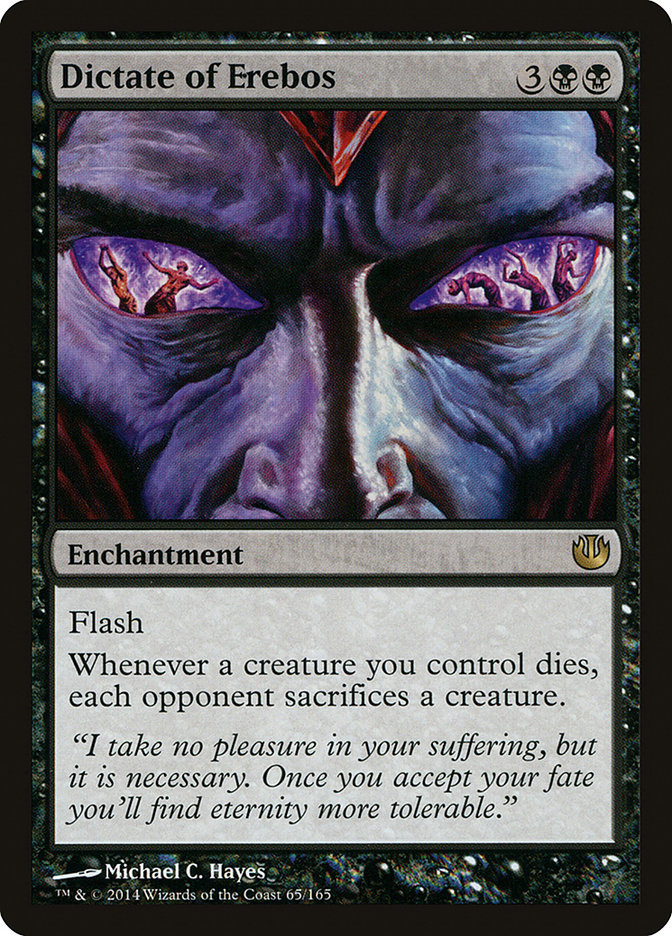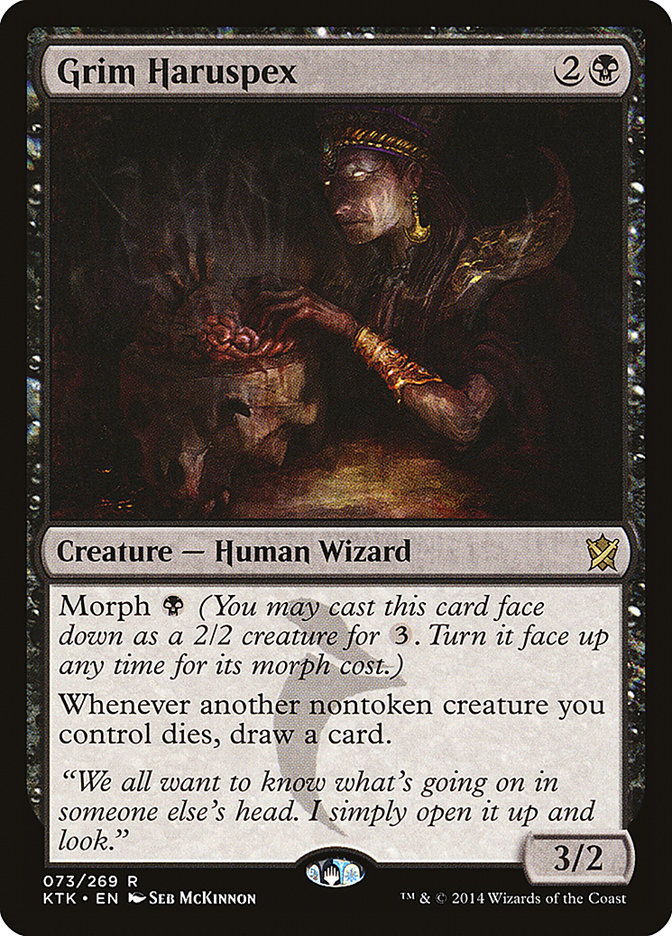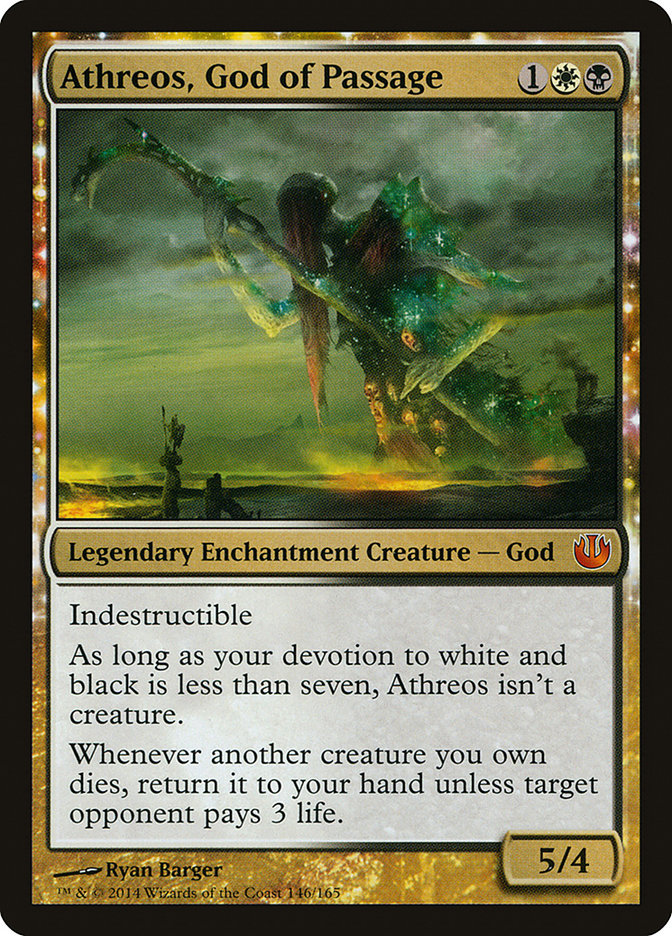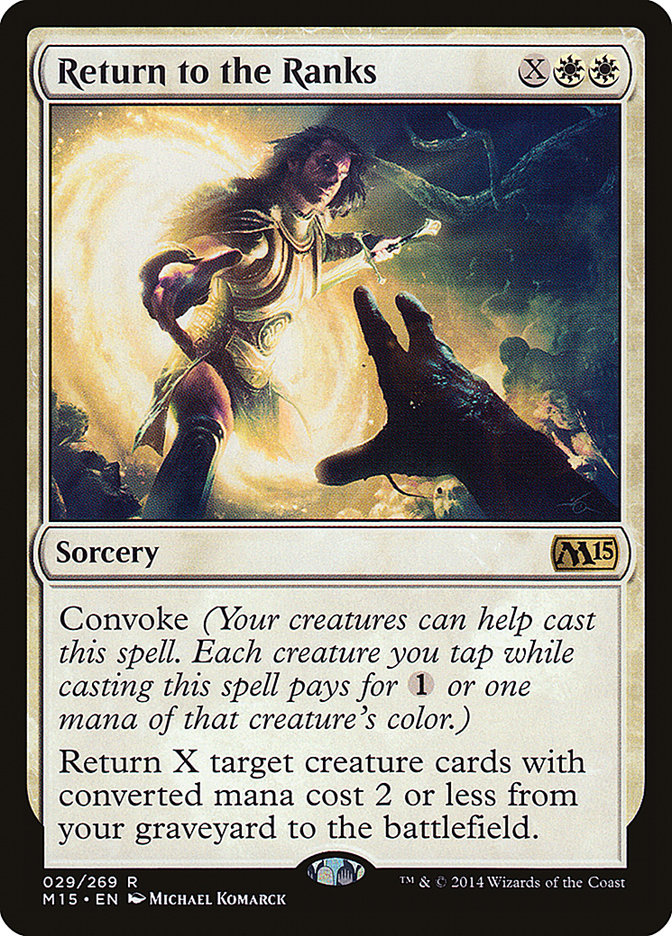When Butcher of the Horde came out, a lot of people expected that I’d try to play the card in every event. After all, it sacrifices creatures and
has reasonable stats. Unfortunately, Standard just wasn’t very well-positioned to take advantage of sacrificing creatures. In order to build a deck around
sacrificing creatures, you need multiple sacrifice outlets (let’s call them aristocrats, in honor of the Aristocrats Falkenrath and Cartel) and multiple
creatures that you want to sacrifice (let’s call them travelers, in honor of Doomed Traveler). Standard had a few of each but lacked a critical mass of
playable options. Fate Reforged has certainly helped us out, so I think it’s worth taking time to evaluate our options for building to this theme in
Standard at the moment.
Aristocrats
This is the cheapest aristocrat to play, and it offers great payoff. Getting a Manifest token is probably at least as good as drawing a card; you’re
drawing and casting a two mana 2/2, which isn’t great, but some reasonable portion of the time that 2/2 will function as another creature in your deck
being in your hand, except that it can battle before you get around to casting it. Even when it isn’t, your opponent has to respect that it could be, and
unlike a token, if your opponent bounces it or kills it, it continues to be a Magic card, which can matter in a wide variety of ways. In general, I think
it’s pretty important to be able to sacrifice things without needing additional mana, but if I’m going to have to pay, I’m happy with the rate to get this
into play and get the payoff it offers.
This is another reusable outlet that costs two mana to use. Early in the game, the payoff of two damage is much lower than the payoff of making a creature,
but Tymaret does offer a certain inevitability that’s valuable. More importantly, it offers a better rate upfront that Qarsi High Priest, as I’d much
rather pay two mana for a 2/2 than one mana for an 0/2, but the real value in Tymaret is in how difficult it is for your opponent to remove your ability to
sacrifice a creature once you’ve cast this. Like Cartel Aristocrat, Tymaret just makes it very hard to disrupt your engine, while if you were relying on
something like Qarsi High Priest to make your other cards good, your opponent could disable your strategy with a single removal spell.
This one comes at a great rate and lets you sacrifice creatures at any time without spending additional mana. The biggest cost here is that you have to
play three colors, and white isn’t offering all that much outside of this to this kind of strategy.
Calling this an Aristocrat is a bit of a stretch, but it comes at a great rate if we’re in the market to sacrifice something. It’s the cheapest and hardest
to disrupt, but it doesn’t offer an engine, though it can be a great supplement.
This is similar to Collateral Damage, but the higher cost and sorcery speed will make it function substantially worse with some of the less obvious
travelers I’ll get to below.
I don’t really expect to try to use this one, but if I’m being thorough, its ability is extremely impressive if you have a lot of travelers jumping in and
out of the graveyard.
While there are other cards like Blood Host that technically have relevant abilities, I don’t think there are any others that can be considered as
reasonably as Champion of Stray Souls.
Travelers
This is as pure as they come. A reasonably costed creature that gets actively better when it dies is exactly what I’m looking for in a traveler. I’d prefer
one mana to two, but this is the kind of card Butcher of the Horde needed.
This one’s less obvious, and it doesn’t have the advantage of most travelers that removal spells are bad against it, but I’d often rather have two cards
than a two mana creature, so this is something that gets better if you can sacrifice it, as you can tap it and then sacrifice it with the ability on the
stack. As noted above, this doesn’t work well with Merciless Executioner
This card likely isn’t good enough, but it is a creature that does something relevantly useful when it dies, so it could be worth considering.
This one’s a bit less traditional but no less effective. The best creature to sacrifice is certainly your opponent’s creature, and Threaten has always been
best when you don’t have to let your opponent take their creature back. Jeering Instigator has the advantage that you can do something with it against
control decks that don’t have creatures for you to take, and it’s also awesome with Sultai Emissary and Qarsi High Priest, as if you manifest it you can
flip it for 1R and still get the ability, which means you’ll have more mana left over to spend on a cost to sacrifice their creature. When all that’s over,
you still have a 2/1 you can sacrifice if you need to.
Same idea as Jeering Instigator, except it requires less setup and doesn’t come with a creature.
I don’t generally think “five-mana creature” when I think traveler, but this does have a powerful effect that’s synergistic with sacrificing other
creatures that trigger when it dies.
Fodder
There’s another category of creature that’s different from travelers, but important to consider in this kind of shell. These are creatures that you don’t
actively want to sacrifice, but that you’re relatively indifferent to sacrificing, like Gravecrawler, Bloodghast, or even 1/1 tokens.
This is an ideal fodder card–it’s cheap to play and easy to return, and it can let you sacrifice it several times per turn if you have the mana.
This is not. It can only come back once per turn and only at a very specific time and only under particular (hard to establish and maintain) conditions. It
can be a powerful aggressive card, but this is unlikely to be the home for it.
This is a cheap source of a steady stream of creatures, and a lot of the time those creatures were just charging to their death anyway, so sacrificing them
is often completely free.
This generally seems worse than Goblin Rabblemaster, but it is another creature than can make a token every turn.
This gives you three creatures, none of which you’re very invested in. You’re not really looking to sacrifice them, but they’ll do in a pinch. If you have
things that want a lot of creatures to die, you’ll need to make a lot of creatures first, and this is the best way to do that.
Likely too expensive for this kind of deck, but if you’re getting paid when creatures die, Elspeth
becomes remarkably more unbeatable.
Green is a fringe useful color, but Satyr Wayfinder is a creature that you can sacrifice cheaply that can fuel additional synergies, finding cards like
Tymaret, Murder King and Bloodsoaked Champion, and powering up cards like Underworld Cerberus and Return to the Ranks.
Artists
Finally, we get to the last category, the artists (in honor of Blood Artist). These are the cards that trigger off creatures dying to give you an
additional payoff for assembling these combos. Just combining an aristocrat with a traveler is nice, as it will produce a favorable interaction of some
kind, but there are a lot of cards available that reward you for repeatedly generating these kinds of interactions. These can really get a deck going, but
they’re somewhat expensive, so it’s definitely possible to skip them or minimize them.
Sadly, the best payoff requires green, which isn’t necessarily where we want to be, and it doesn’t even work in a three-color pair with Yasova Dragonclaw,
a card that I didn’t mention above because the color commitment doesn’t work well, and it’s too much an independent target, though it can obviously do a
Jeering Instigator impression. If you make the mana work and plan to sacrifice nontoken creatures, the payoff of getting a spirit every time is both very
powerful and likely has further synergies with the rest of your deck.
This is expensive, but if your deck is full of cards that give you multiple creatures or creatures that die multiple times, this can easily make it
impossible for your opponent to keep a creature in play unless they’re also making large numbers of tokens.
This is a great kind of payoff, as it can both control the board and kill your opponent, which allows you to win outside of combat, which can be important
when all of your creatures have terrible stats because they’re designed to die. Cute synergies are nice, but unfortunately, they need to be advancing some
kind of gameplan that will actually kill your opponent rather than merely generating nebulous “value,” and this is a great way to convert value into an
actual kill.
This, on the other hand, doesn’t directly kill them, but it does create a huge amount of value at a pretty low cost. Like Jeering Instigator, this one is
awesome to manifest, this time because its morph cost is so low, and the payoff for having it in play is so high.
While merely trying to keep your creatures alive by forcing your opponent to pay life when they want to kill them has generally proven relatively
ineffective, there’s still some hope that taxing your opponent to stop you from looping your own interactions could easily overwhelm them.
I wasn’t exactly sure where to put this card. It can certainly end up functioning primarily as fodder or as additional travelers, but really I think it’s a
big payoff spell that rewards you for going through the trouble of playing lots of small creatures and putting them in the graveyard.
This is a long list of cards, many of which are from Fate Reforged. This means that we have a new set that’s added substantial new tools to an existing
strategy that already had support, though not quite enough. Building a deck around these interactions requires very precise tuning, and the strategies and
interactions run counter to what most decks are trying to do in a way that makes simply putting the best cards together and iterating a bit less likely to
produce good results than with a lot of decks. This is to say that the fact that we haven’t seen a successful “Aristocrats” deck in Standard yet is very
weak evidence that the cards aren’t there to make one.
When building this kind of deck, you need to focus on getting all your pieces into play quickly. Each of your cards is weak on its own, and they all need
to be in play to work together. A lot of linear strategies suffer a similar problem, which makes them weak against removal because a deck full of removal
will disrupt their synergies. Fortunately, a deck based on creatures dying tends to have natural resistance to removal, so this is less of a problem. What
will be a problem is opponents putting pressure on you before you can assemble. This means you need to prioritize your curve very highly, so that you can
get your pieces into play as soon as possible. This also incentivizes minimizing lands that enter the battlefield tapped, which pulls away from playing too
many colors.
Because of this, I’m most optimistic about decks that are just black and red, but the payoffs for other colors are definitely worthy of consideration.
Decks also don’t have to be (and likely shouldn’t be) composed entirely of cards listed above. You’ll want most of your cards to focus on building
synergies, but that doesn’t mean you shouldn’t play Stoke the Flames in a red deck full of cheap creatures or that your black deck won’t at least want
access to Thoughtseize in the sideboard.
You’ll note that I’ve gone over the options, rather than starting with a list and explaining the choices. With Pro Tour Fate Reforged coming up, I haven’t
had a chance to experiment much with Standard (read: I haven’t played a game), but I have given some thought to how some of these decks might look. Let me
leave you with a few skeletons I’ve written up:
Creatures (20)
- 2 Tymaret, the Murder King
- 4 Goblin Rabblemaster
- 2 Jeering Instigator
- 4 Bloodsoaked Champion
- 4 Sultai Emissary
- 4 Qarsi High Priest
Lands (23)
Spells (17)
- 2 Act of Treason
- 4 Stoke the Flames
- 4 Howl of the Horde
- 2 Tormenting Voice
- 1 Outpost Siege
- 4 Collateral Damage
Sideboard

This deck has a low curve, as discussed above, and an aggressive gameplan. The cheap creatures don’t attack for all that much damage, but they come down
early to set up a board to get in big hits with Act of Treason or to convoke Stoke the Flames. Your goal is to get some damage in early, but you’re mostly
planning to burn the opponent out by copying Collateral Damage or Stoke the Flames with Howl of the Horde and sacrificing creatures to Tymaret, the Murder
King. Howl of the Horde is also great with Tormenting Voice.
The sideboard plan against control decks is to fill the graveyard quickly, which you have additional fetchlands to accomplish, as well as Thoughtseize and
your opponent killing your creatures, and then Howl of the Horde Tasigur’s Cruelty to strip their hand for four or five mana.
Clearly, this deck is devoting a lot of slots that could be devoted to pushing the creature themes to try this Howl of the Horde theme, but I think it’s a
powerful card that plays really well with the burn spells that use your creatures (Collateral Damage and Stoke the Flames).
A more dedicated approach might look more like:
Creatures (31)
- 2 Underworld Cerberus
- 3 Tymaret, the Murder King
- 4 Ruthless Ripper
- 2 Jeering Instigator
- 4 Bloodsoaked Champion
- 4 Grim Haruspex
- 4 Sultai Emissary
- 4 Qarsi High Priest
- 4 Merciless Executioner
Lands (24)
Spells (5)
Sideboard

Between Grim Haruspex, Jeering Instigator, and Ruthless Ripper, we can actually disguise our morphs and our manifests have a lot of extra spice. Underworld
Cerberus means that we’re building toward a strong end game while activating Qarsi High Priest to put new cards in the graveyard. Grim Haruspex really
shines in this deck; while we plan on having a lot of creatures go to our graveyard, none of them are tokens, so it will always trigger.
Ruthless Ripper may seem like an odd choice because we see other aggressive decks prioritizing one-drops with more power, but that’s because they’re
interested in killing blockers and hitting the opponent with their one-drops. Ruthless Ripper is great in this deck though, because I’m not looking to play
early removal spells on my opponent’s creatures. Often, they won’t block this, and I can get a free damage in, and then after I’ve set up a Grim Haruspex,
this can trade with anything. It comes down cheaply to let me fill my board, and can easily contribute to a ground stall that lets my engine work. On top
of that, it makes my other morphs and manifests better just by existing in my deck and offers additional reach on the flip trigger.
There are other directions to explore, especially with other colors, but as I mentioned above, I’m actually most optimistic about the two-color builds, as
I’ve generally prioritized having fewer colors, better mana, and fewer tapped lands in Standard ever since Theros was printed.


